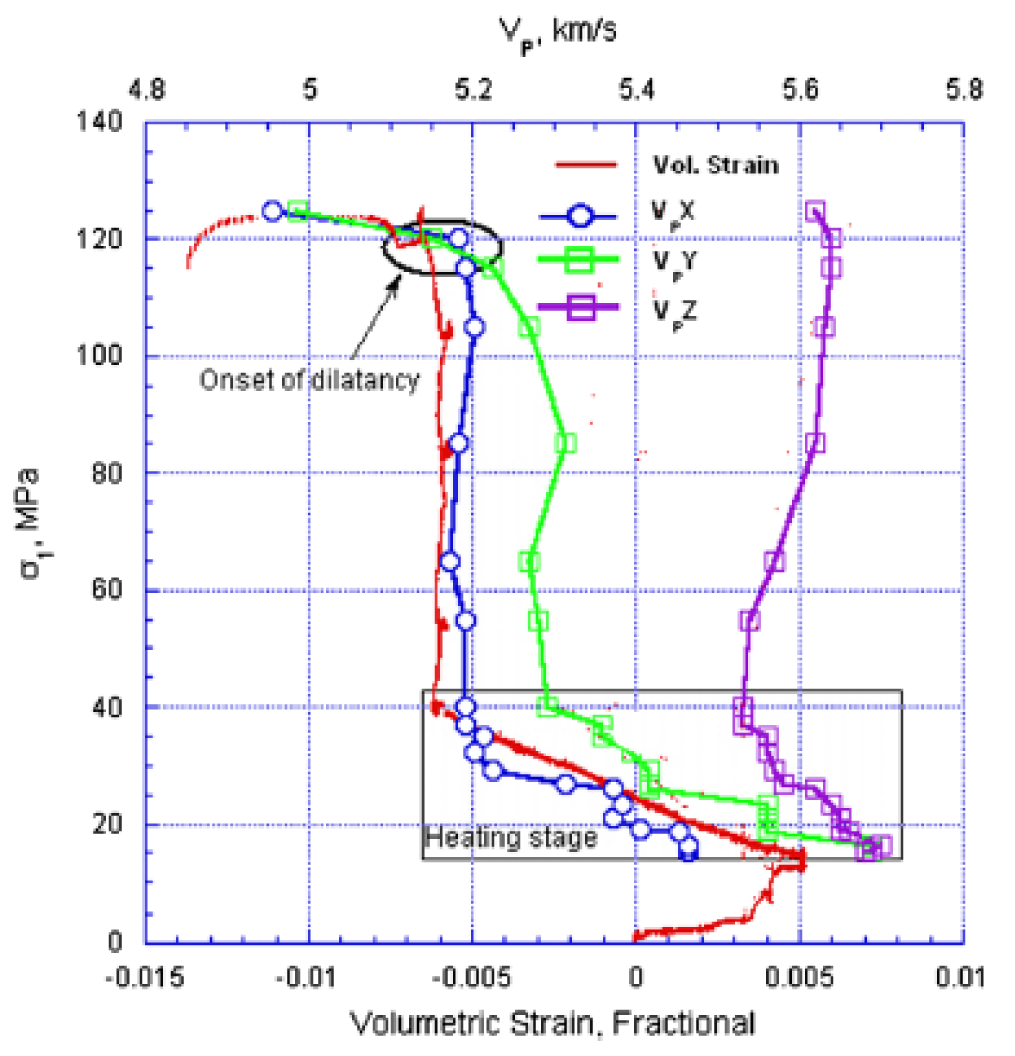
The demand for underground radioactive waste repositories makes the study of thermo-hydro-mechanical (THM) processes in rocks an increasingly important topic. In collaboration with the Nuclear Waste Management Organization (NWMO) we conducted triaxial deformation experiments on Cobourg limestone, an argillaceous sedimentary rock found in Southern Ontario, Canada. Experiments were conducted at a constant confining pressure of 12.5 MPa where samples were axially loaded at a constant displacement rate until failure. Samples were heated in situ to 50C, 100C and 150C to study the thermal effect on deformational response, elastic properties and transport properties.
Our preliminary results show the dependency of mechanical and transport properties to applied temperature and stresses as seen in the displayed figure. Permeability was measured at various stages during heating and deformation using the pulse-decay method. We observed that permeability decreased due to the effect of thermal and differential stresses, which caused compaction of pore spaces and weak bedding planes. Permeability increased after further compression which led to the initiation and growth of axial cracks parallel to maximum principal stress..
Related Publications
- Nasseri, M.H.B, S.D. Goodfellow, T.S. Wanne, and R.P. Young (2013), Coupled Thermo-Hydro-Mechanical properties of Cobourg, International Journal of Rock Mechanics and Mining Sciences, (61), 212 – 222.
- Nasseri, M.H.B, S.D. Goodfellow, T.S. Wanne, and R.P. Young, Thermo- Hydrmo-Mechanical properties of Lindsay limestone: A candidate for Nuclear Waste Repository in Canada, ARMA Conference, June 24 – 27, 2011, Chicago, Illinois, USA.